Submitted by WA Contents
BAU Brearley Architects+Urbanists completes Chonggu Experimental School with curved slabs
China Architecture News - May 20, 2024 - 11:59 3365 views

Melbourne and Shanghai-based architecture practice BAU Brearley Architects+Urbanists has completed a school in China, featuring curved slabs and edges that promote flexible spaces and student-driven learning.
Named Chonggu Experimental School, the 21,425-square-metre building is a public institution in Shanghai, and challenges traditional educational typologies with its dynamic layout.
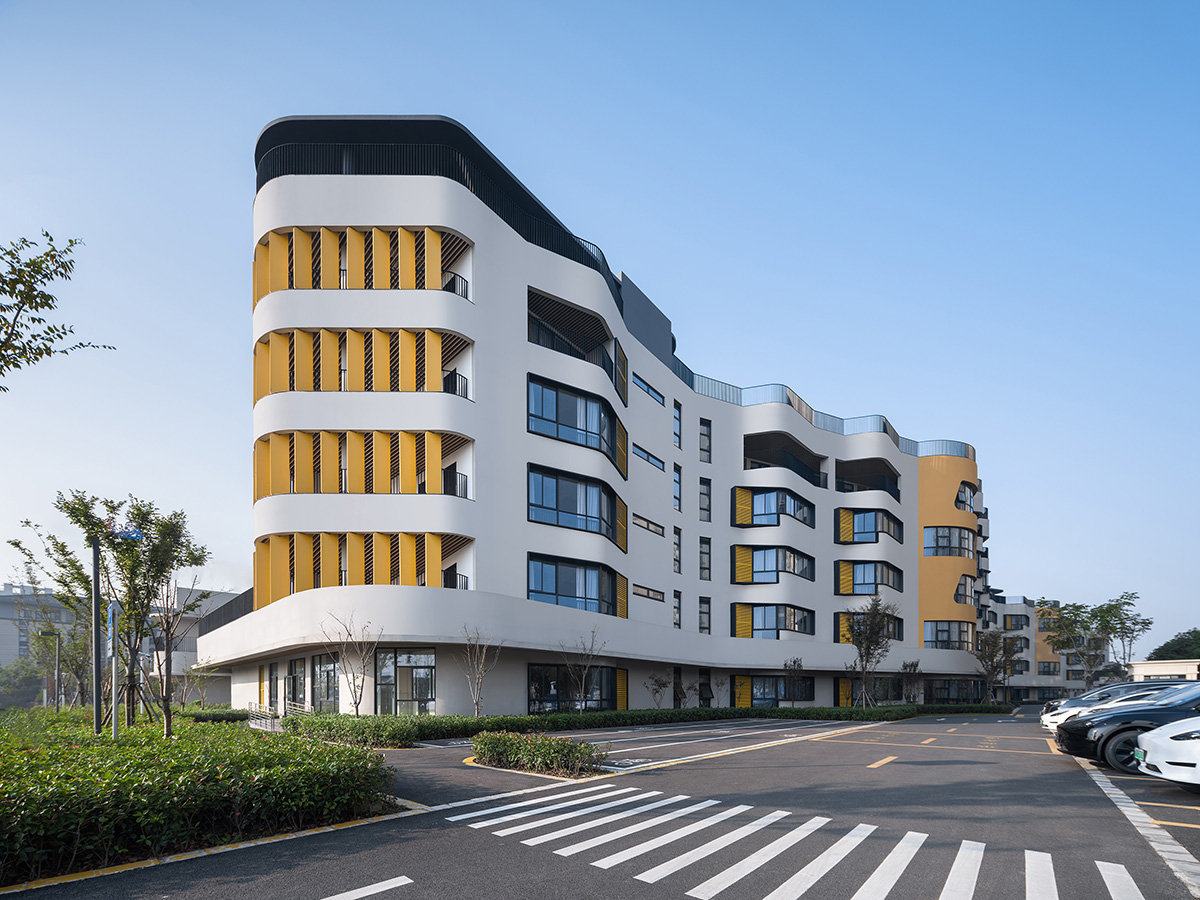
The school, serving children ages 1 to 9, offers the potential to move away from the traditional disciplinary model of pedagogy to less formal, research-based approaches.
The school also "presents a paradigm shift in formal expression – a design shaped for joy, play and dreaming," according to the studio.
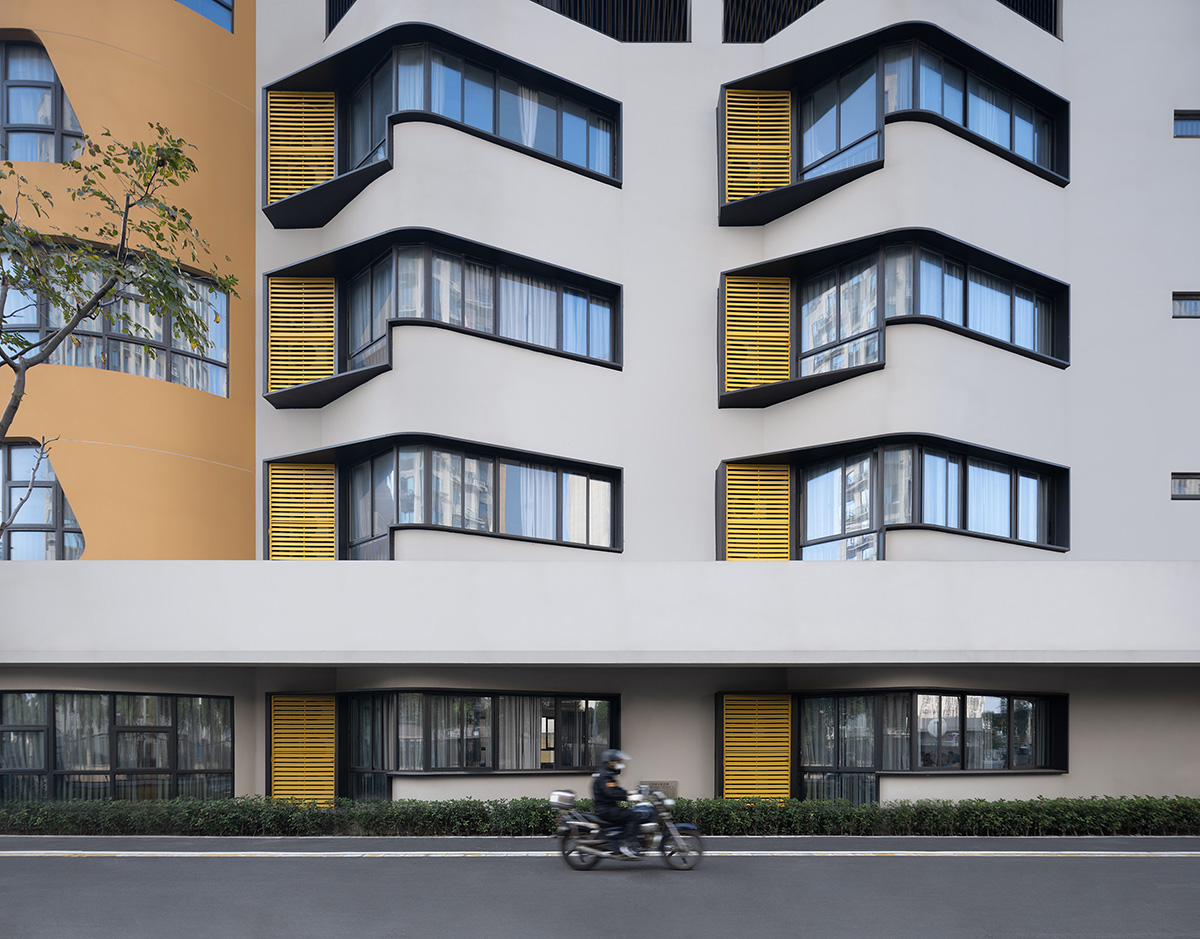
"Public schools in Shanghai are conservative in their pedagogy and factory-like in their architecture," said BAU Brearley Architects+Urbanists. Read the full design narrative with the architects' own words.
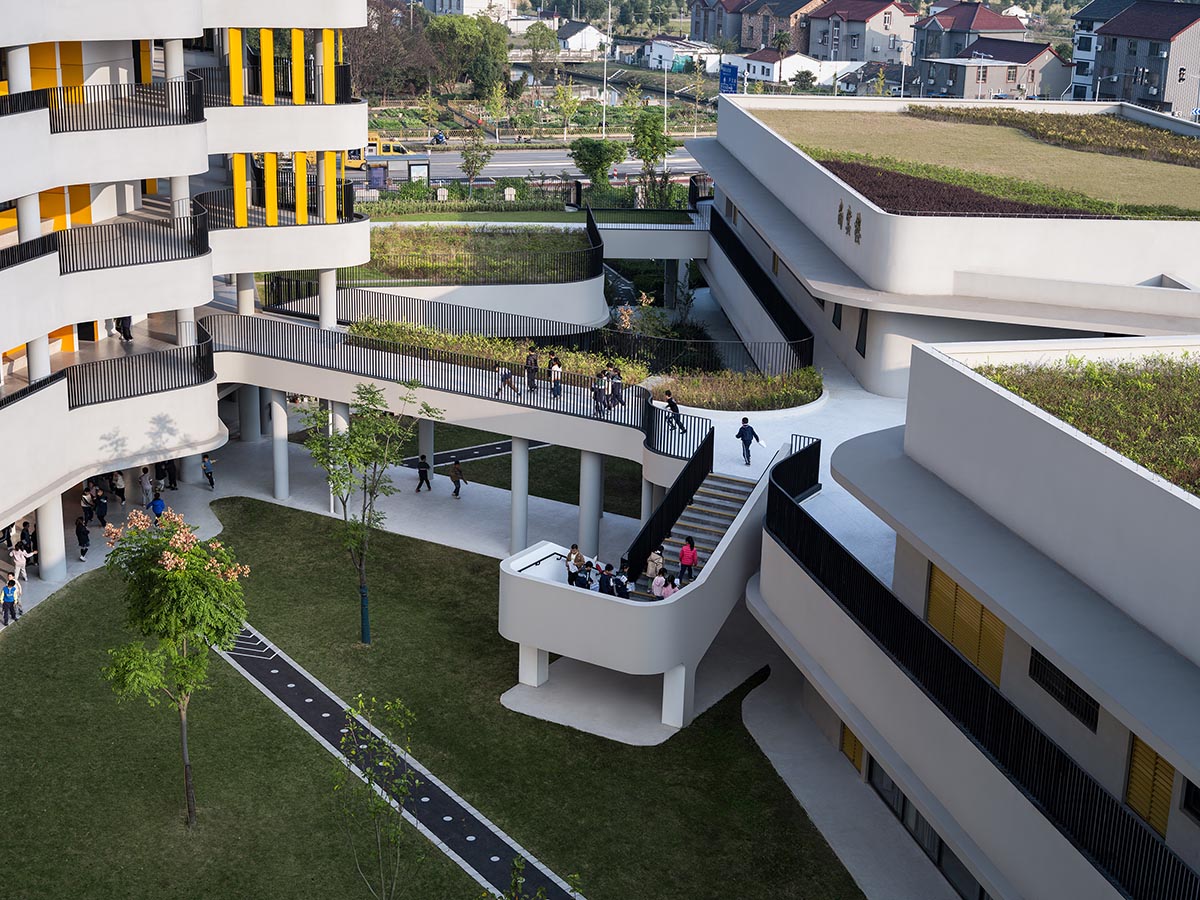
Daydreaming
Inspired by the site’s canal and by the lyrical drawings of late architect, Zhang Zai Yuan, the formal language of the school is dream-like, another world, a world of innovation, creativity, and difference. The familiar school typology of slab with external corridor is increasingly distorted toward the school interior courtyard.
Observed at first by a crank in the slab, then by a bent window, then by parabolic bay windows, and soon by lines of balconies vibrating with movement. As if reality has been shaken — like a rope held at one end, with waves of different sizes hurtling along its length, suddenly stopped in a frozen moment.
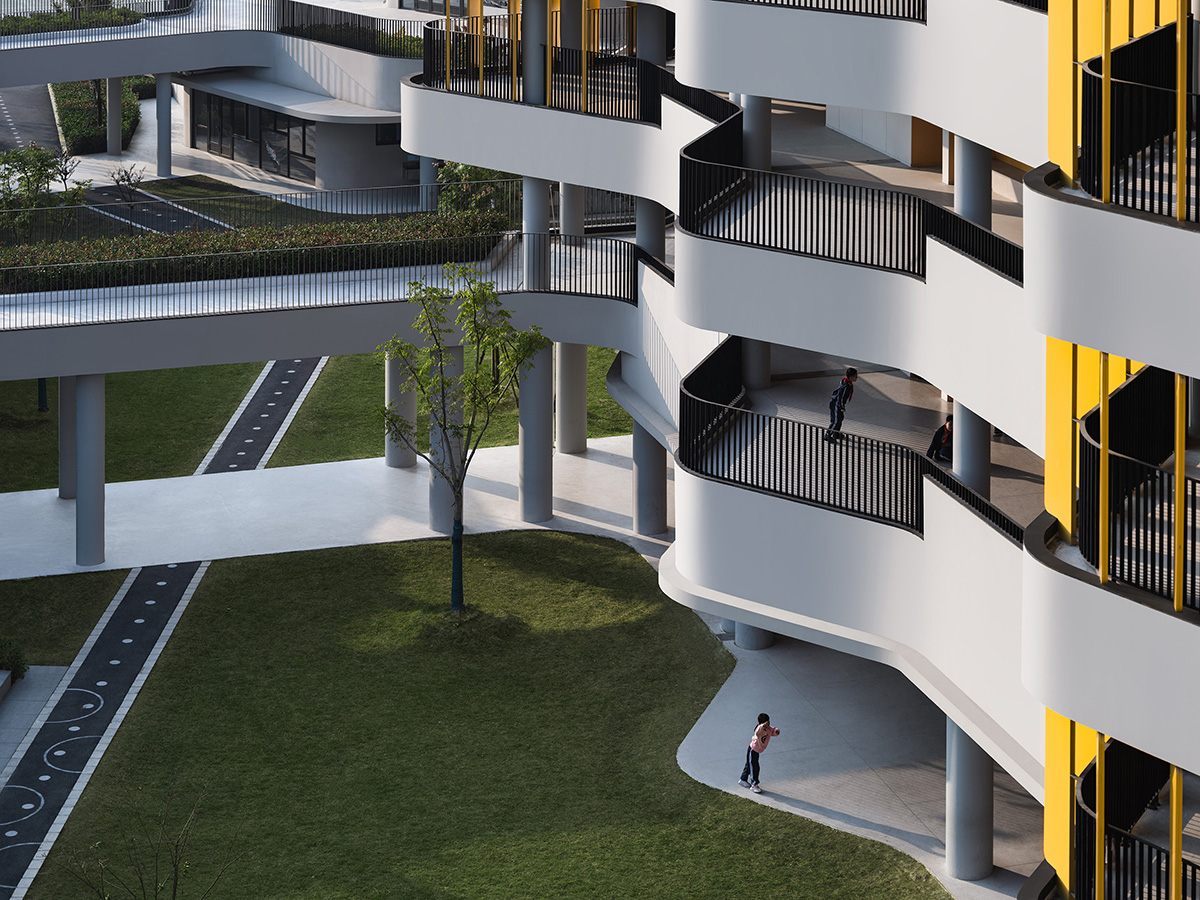
Not spoon-fed but student-driven
Academics remain split on the effectiveness of formal vs informal pedagogic models. China remains at one extreme, the teacher as the font of all knowledge, and students rote learning correct answers. Schools such as those applying Reggio Emilia philosophy are at the other, where students, and teachers, have significant degrees of autonomy over their curriculum. Traditional classrooms are well known to us. They are usually boxy and have an array of desks facing the front.
Informal teaching spaces on the other hand are larger rhizomatic, flowing field conditions where teams of teachers oversee students working independently or in small groups.
The student-teacher ratio is high in China, with large classes of 40-50 students the norm. With this ratio it is difficult to manage any but the traditional pedagogic model and its requisite multitude of classrooms. Team-teaching, enquiry driven approaches require a greater number of teachers; and corresponding higher wage bill.

At the current declining birth rate, China anticipates a dramatic drop in the number of school students.
This will free space, and teachers, in existing schools and create opportunities for experimentation with pedagogies. New school architecture needs flexibility to adapt to the space requirements and enable these progressive initiatives.
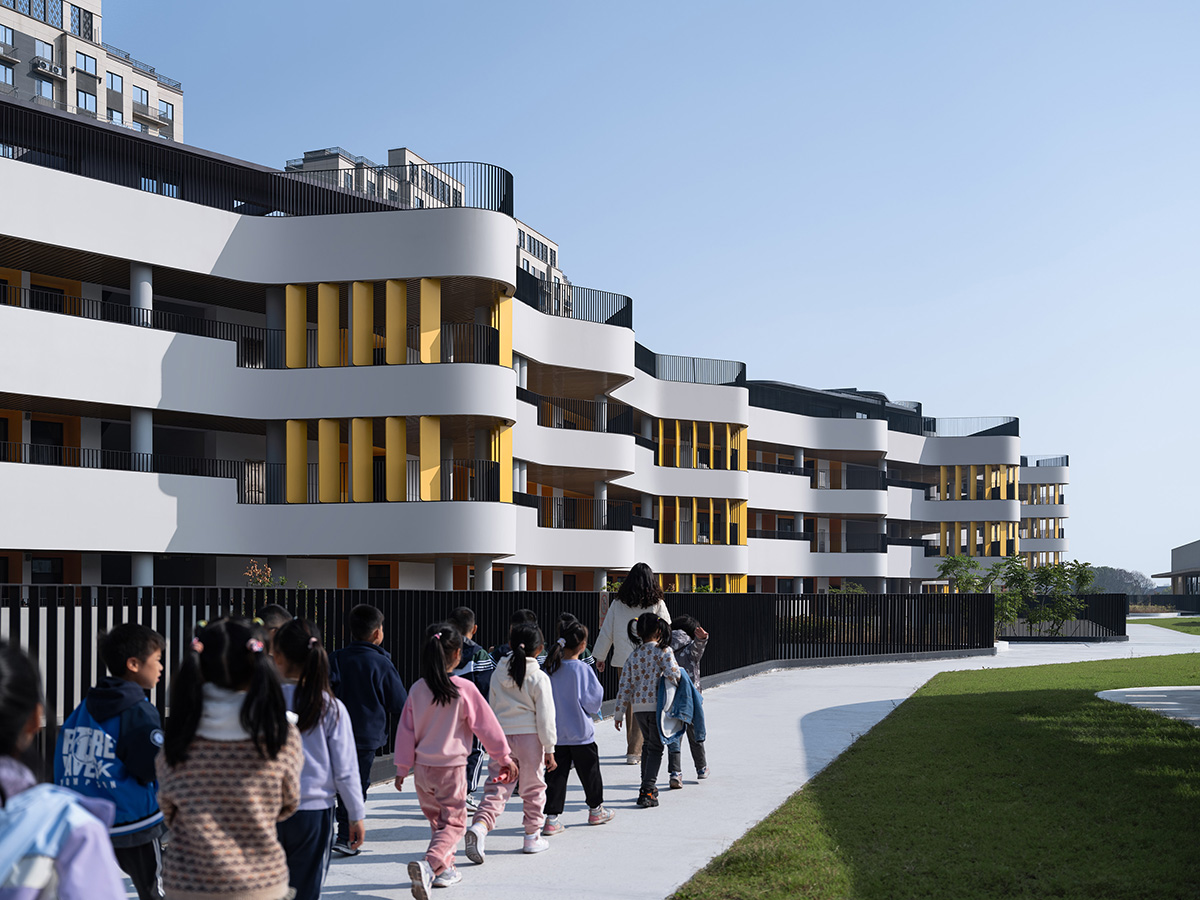
If not less, then at least more engaging
Chinese students are extremely highly educated; this is due to the arduous hours of study as much as to the style of teaching. Competition for good university places begins in kindergarten.
The issue of children heavily burdened with study is acknowledged by authorities but has proven impossible to alleviate. A more student-centered pedagogic model could be one solution to creating a more varied, fulfilling, and enjoyable curriculum, without reducing the required learning intensity. It might also prepare students to be nimbler for an AI future.
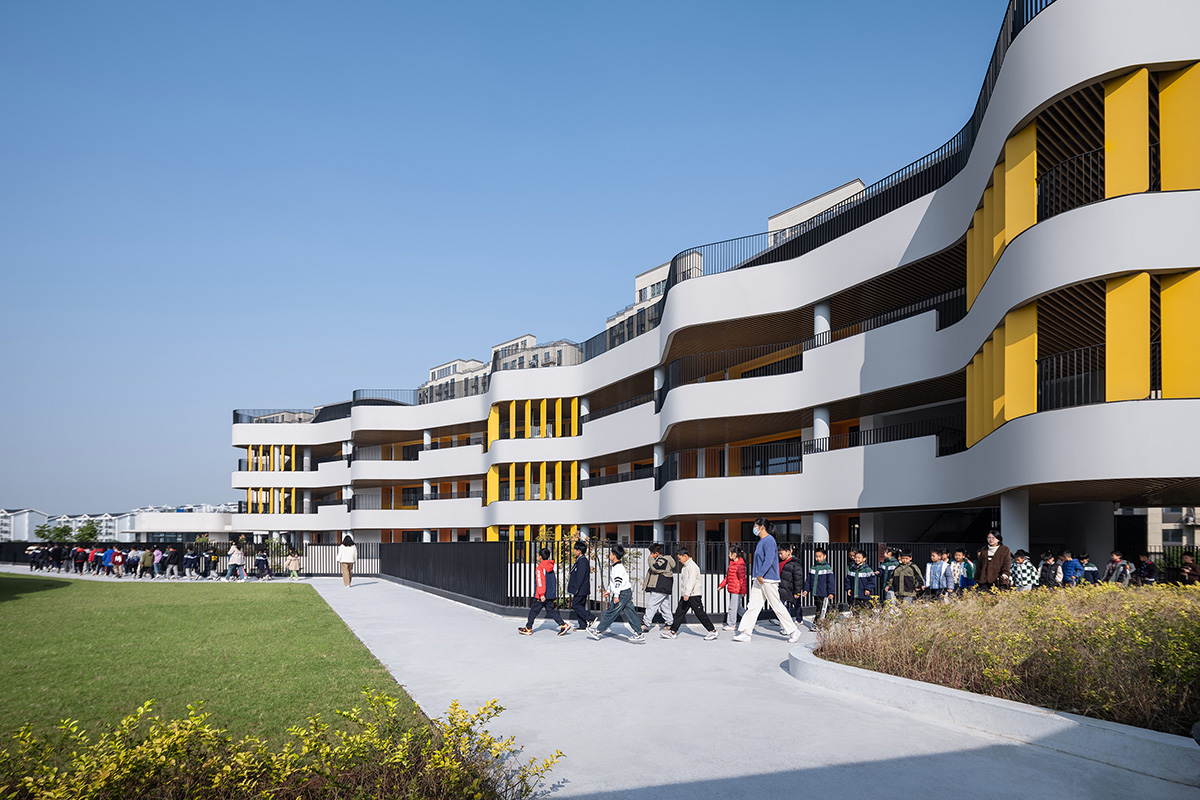
Future proofing
Chonggu Experimental School can be transformed from a traditional teaching model to one that suits student centered learning in a number of ways. Firstly, the walls between each pair, or group of three, classrooms can be replaced by operable walls, enabled by the column structure.
This enables team teaching. Secondly the classroom corridors, running the length of the slab building, can become enclosed with glazing to create a generous internal street suitable for programs such as exhibitions. Thirdly the rooms at the knuckles in the slab building are designed to be used as student study and project space.
Finally, the large meandering corridor network within the two-story extra-curricular buildings are wide and designed with bulges to accommodate all manner of study and nooks and pods. Peer to peer learning, digital-based learning, project-based learning, student enquiry, and STEAM learning can be supported in these informal spaces.

Look out
The site is adjacent one of Qinpu’s hundreds of canals. Gymnasium, library, auditorium, music school, art school, and various special functions are placed here with windows, verandas and terraces overlooking the canal.
At a future date the existing public canal fence should be removed and a landscape developed to integrate the school with the canal. The taller classroom building’s balconies overlook the green roofs of the specialized buildings and the canal.
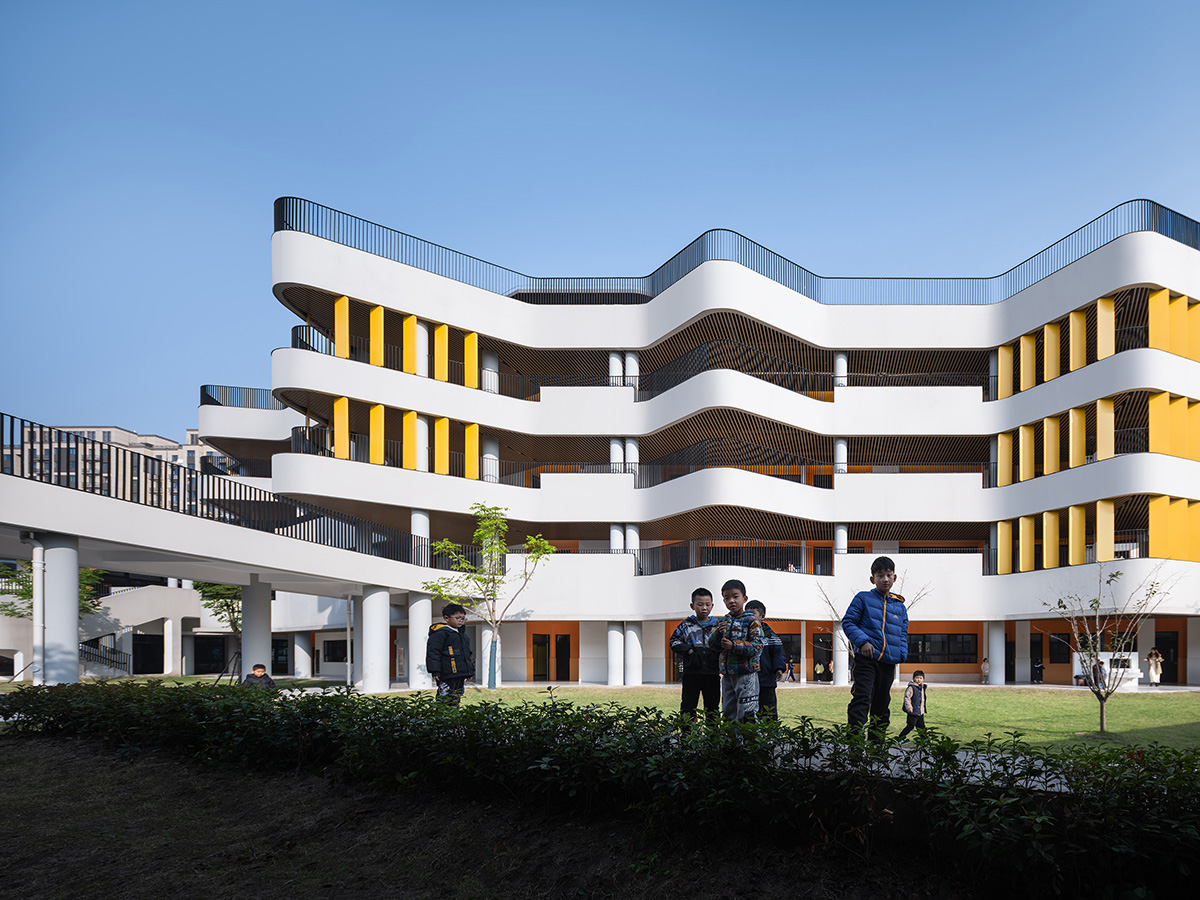
Bleachers and pitches
The sports hall and canteen are located adjacent to the sports grounds. Grandstand seating connects the rooftop and second floor level with the sports fields and provides a place for students to hang out.
The canteen is located to enable further view sharing from the adjacent taller teaching wing. Along with its terrace the canteen hall has broad views over the sports fields, activities, and beyond.
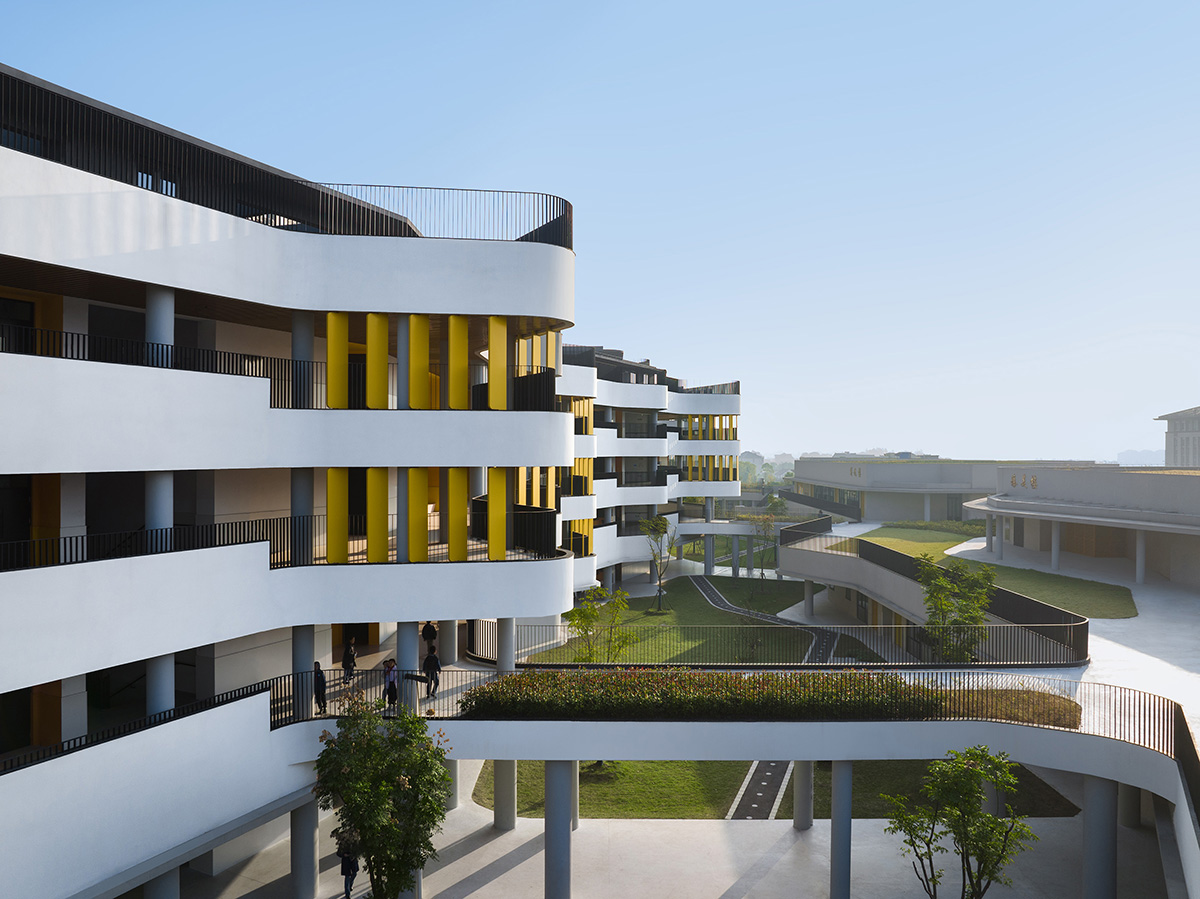
Pre-fab
Despite the curved edges of the floor slabs, the buildings adopt a standard structural grid to facilitate the assembly of prefabricated components.
The external walls, columns, floor slabs and staircases are rationalized to enable a minimum 40% prefabrication rate for both the overall construction and for each individual building. Prefabrication reduces cost, time, wastage, and urban disruption. It also enables a higher quality of construction and finish.
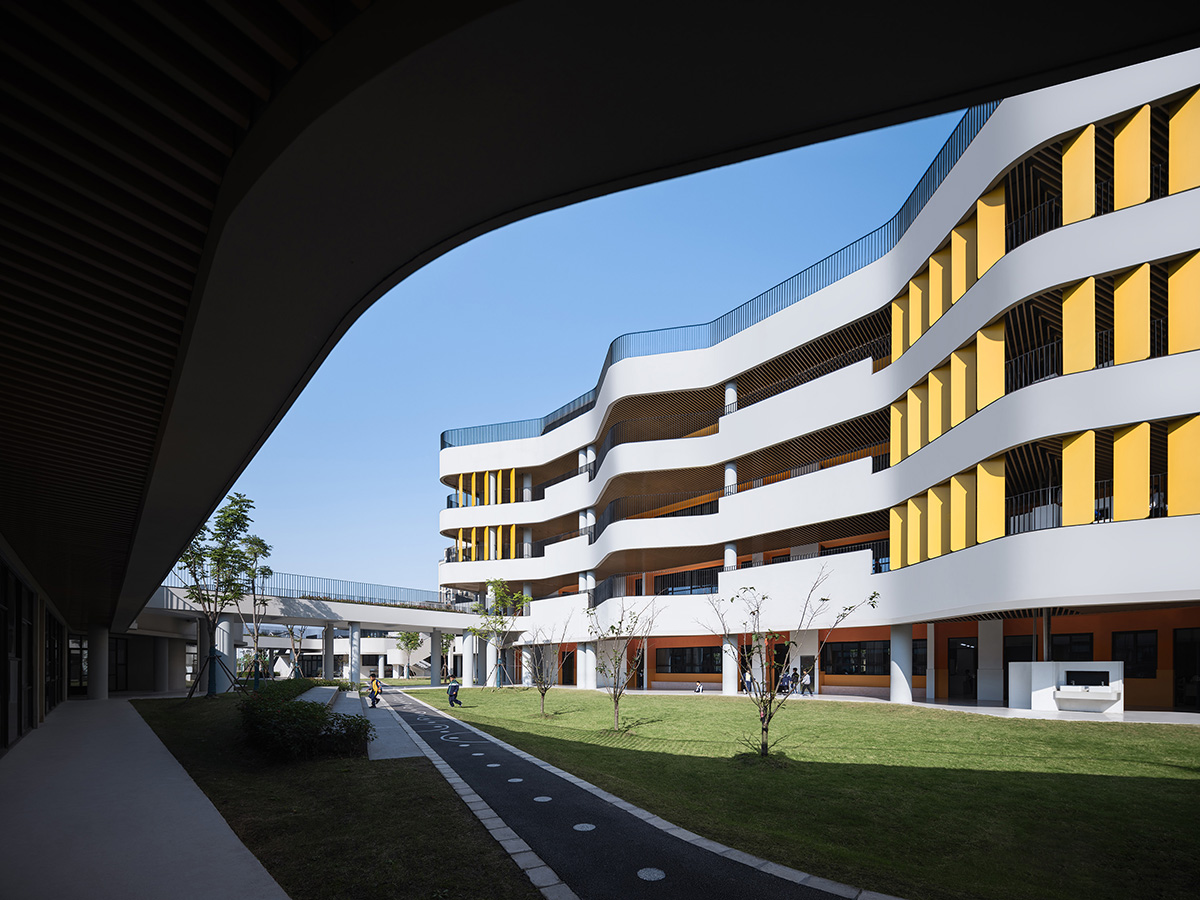
Summer smart
To counter Qingpu’s notoriously hot summers, and to lower carbon consumption and improve comfort levels, passive solar control is employed.
Eaves and fins prevent the majority of summer sun from entering the buildings. The majority of the site and rooftops are vegetated. This supports sustainable urban drainage systems, sponge city objectives, bio-diversity and the lowering of the urban heat island phenomenon.
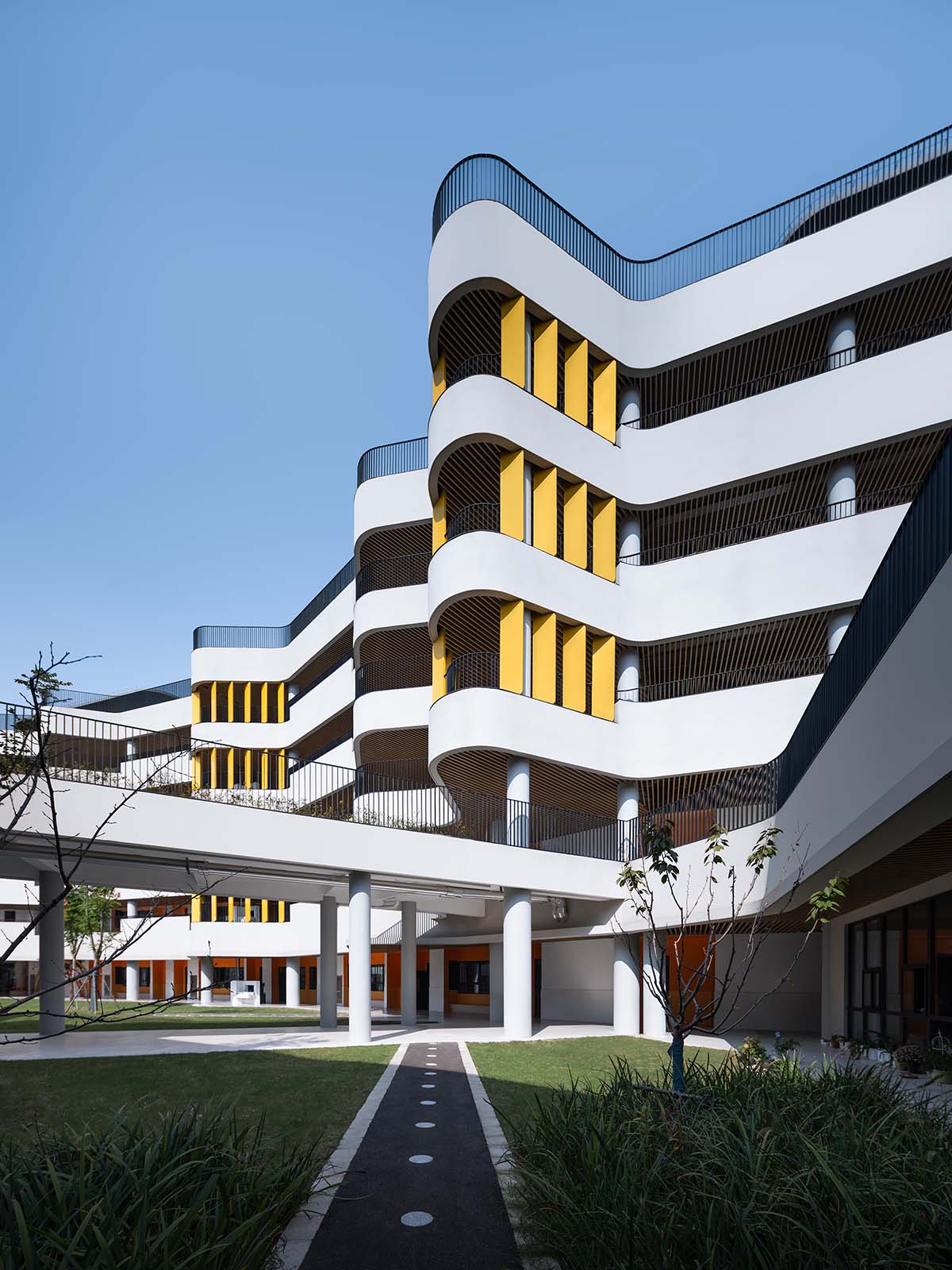
Potential filled
The increasingly popular team-teaching pedagogies profess to finding the potential of all students, particularly those who are unmotivated in the traditional system.
Chonggu Experimental School likewise provides the opportunity for all manner of educators to fulfill their own potential and engage in other ways of teaching.
The architecture supports a traditional pedagogy but importantly it will equally encourage and support alternative methods should an enlightened and adventurous head teacher arrive at the school.
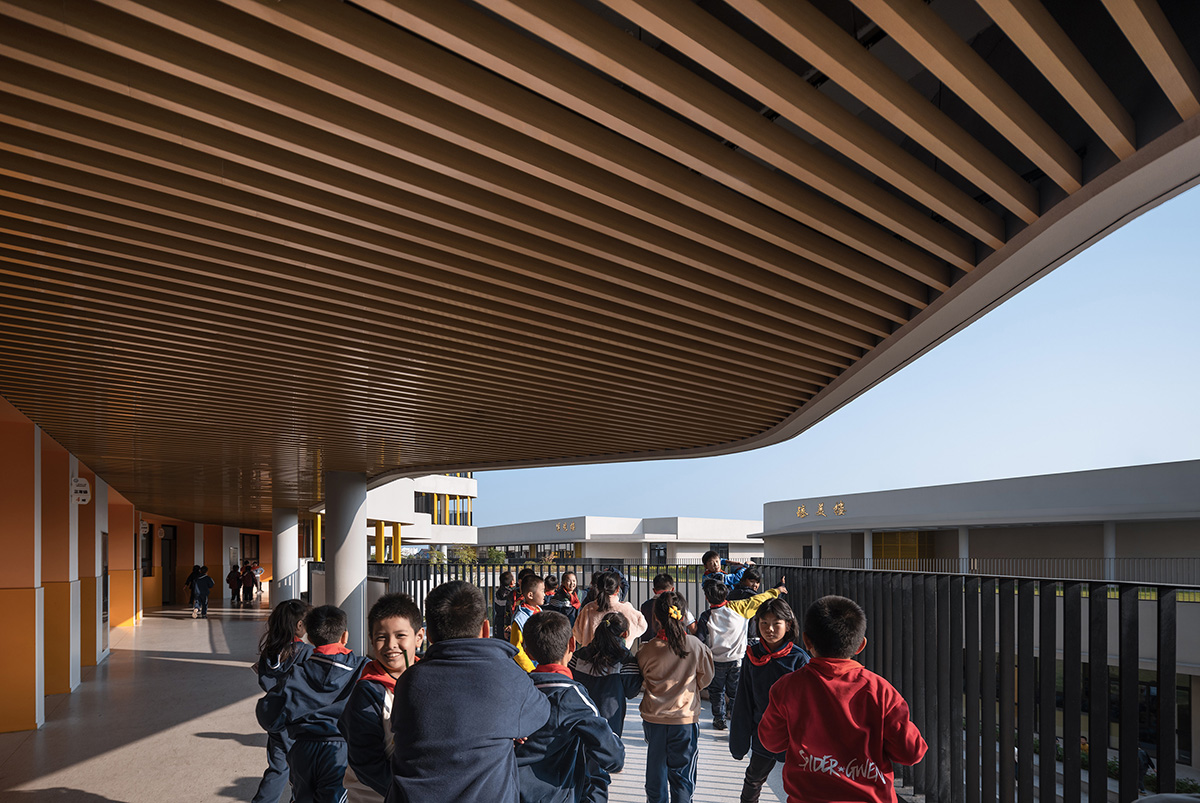
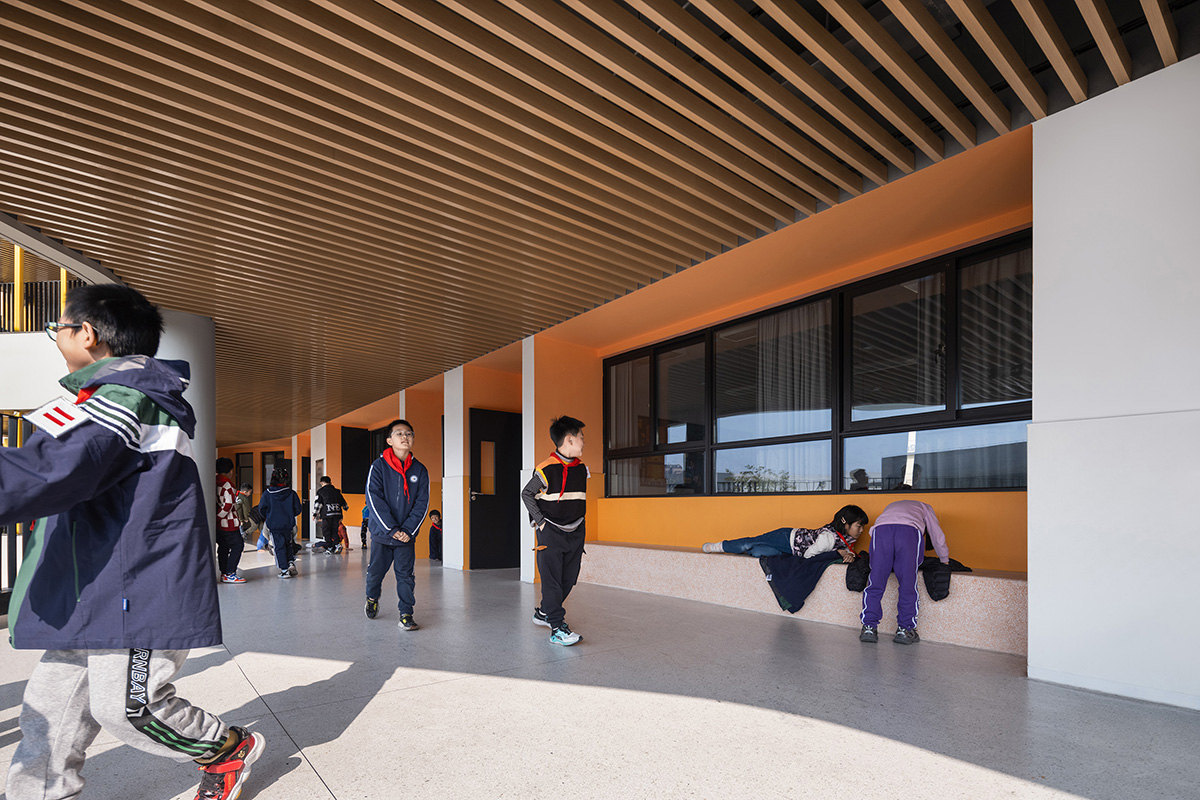


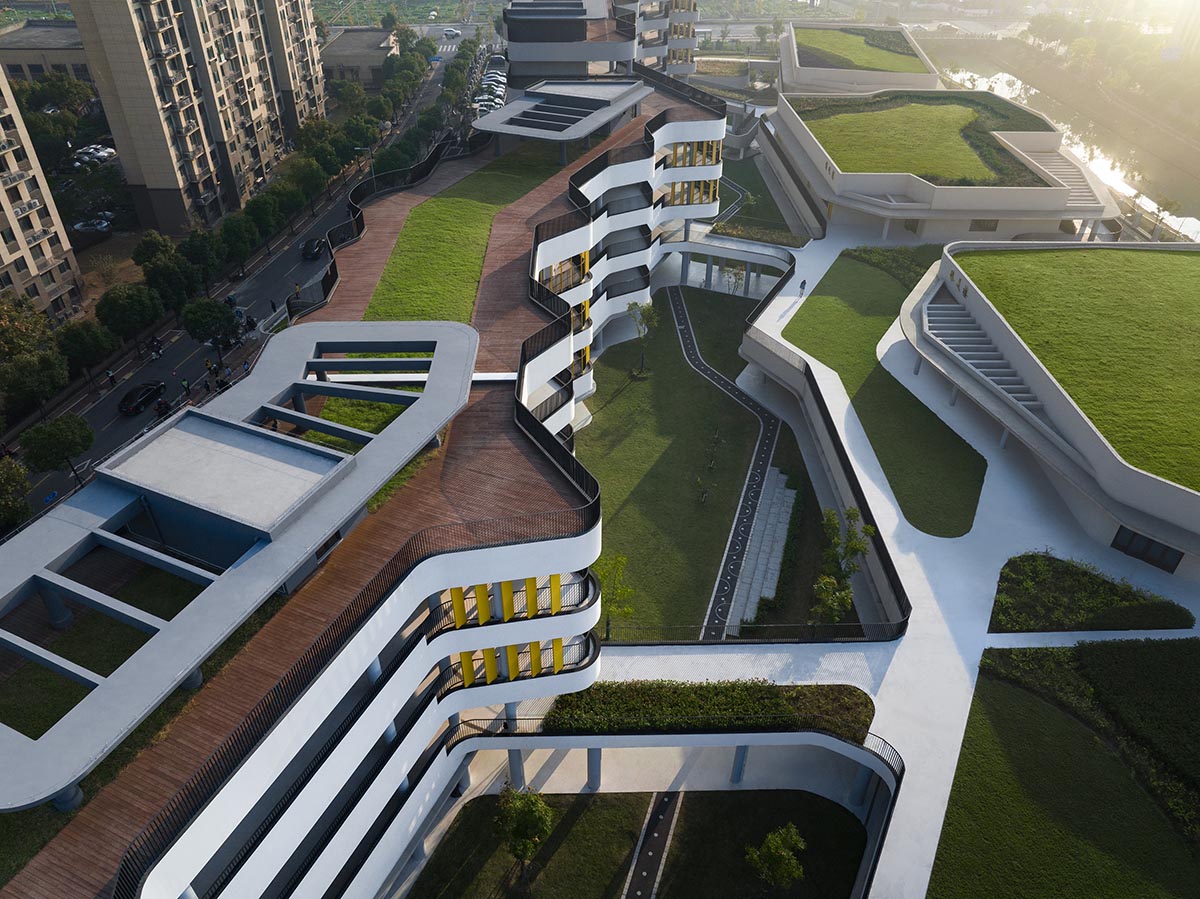
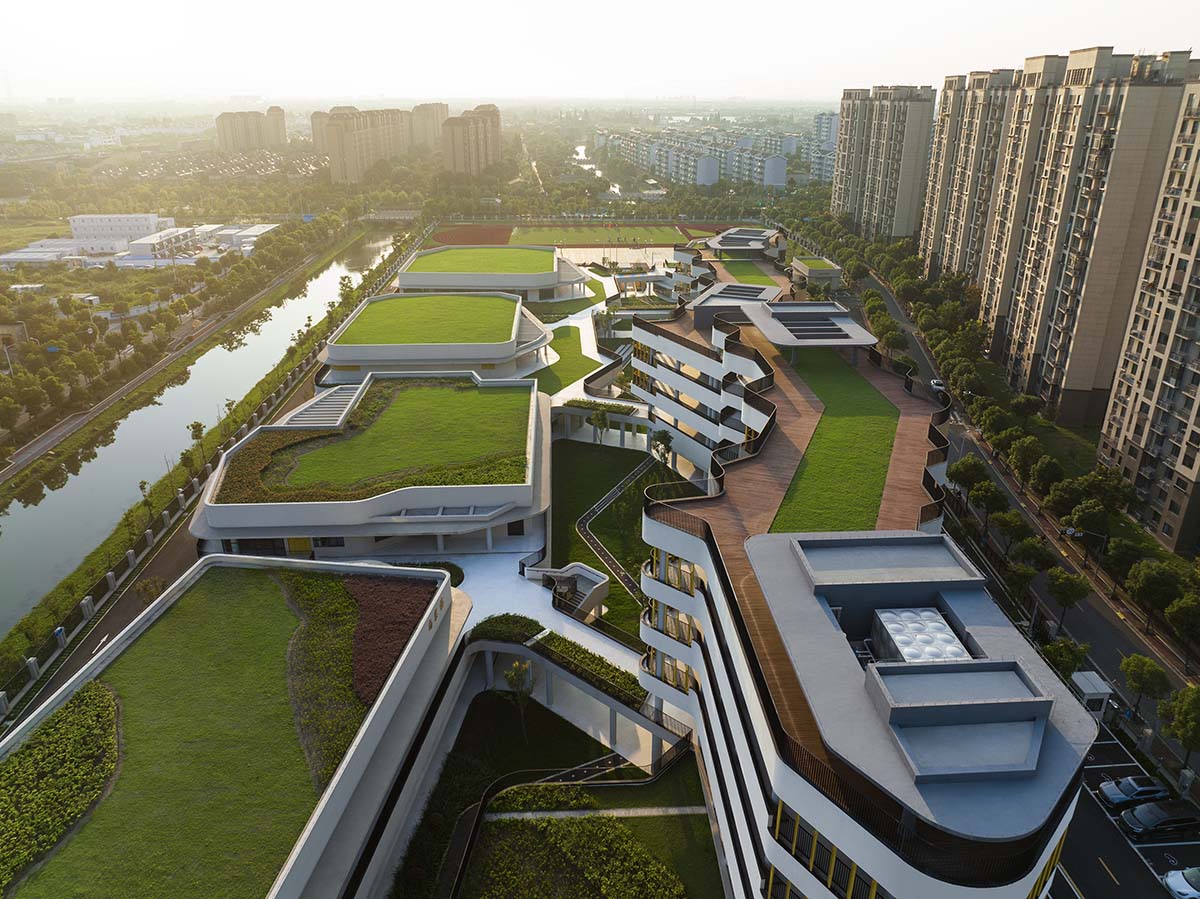
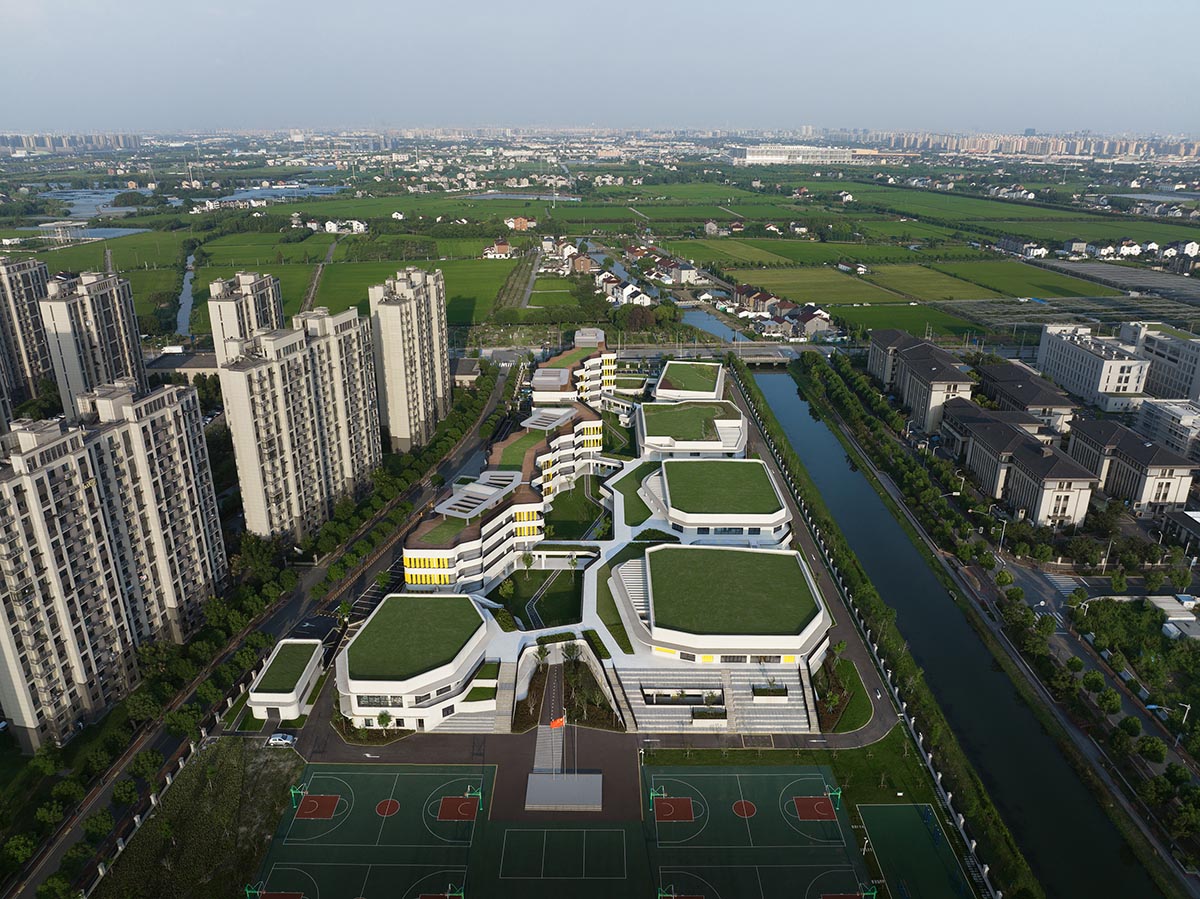

Ground floor plan
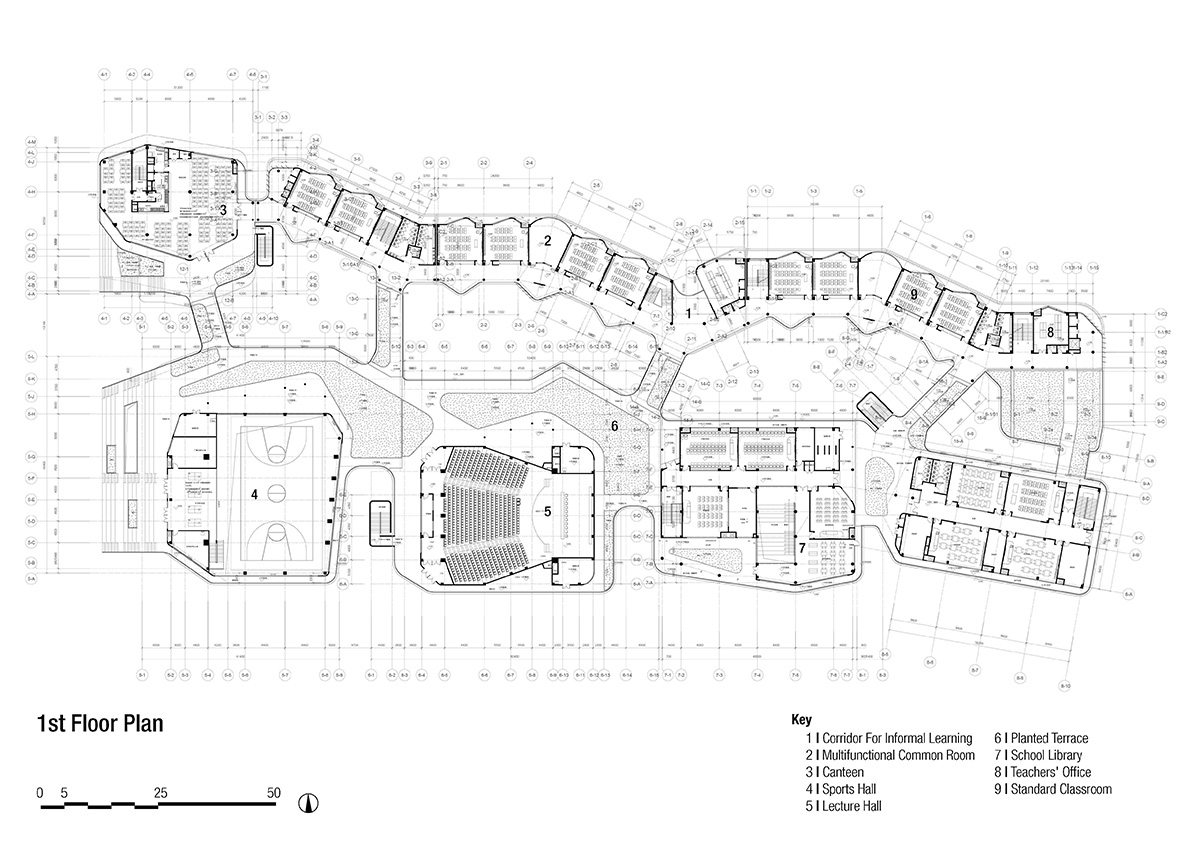
First floor plan

Second floor plan
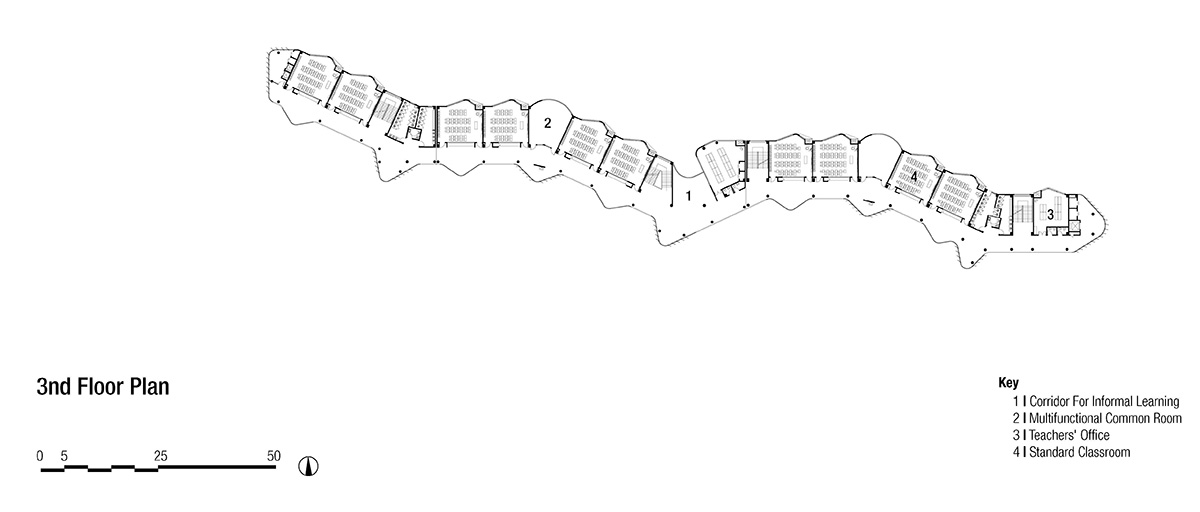
Third floor plan
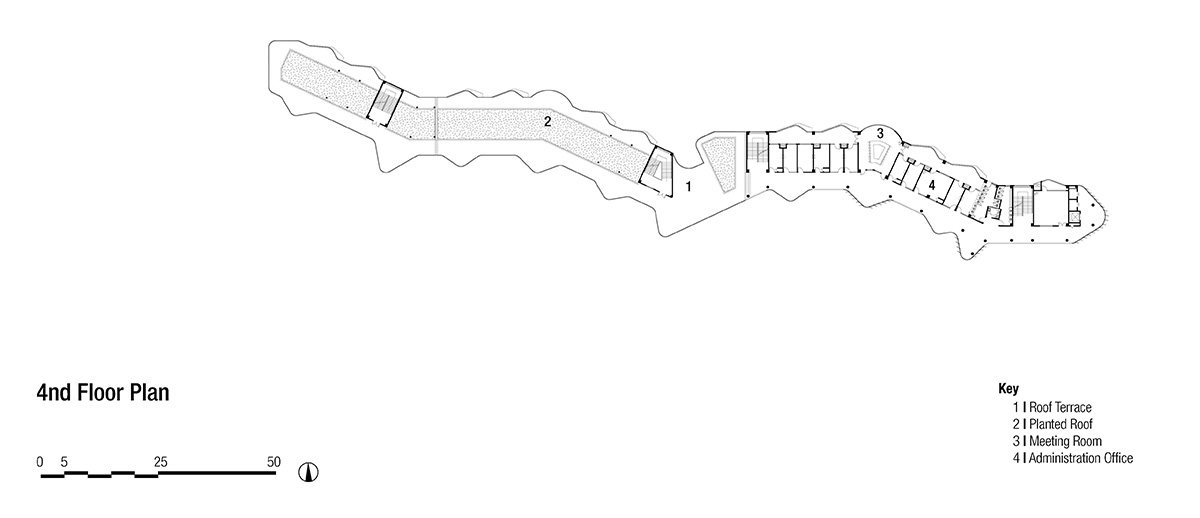
Fourth floor plan
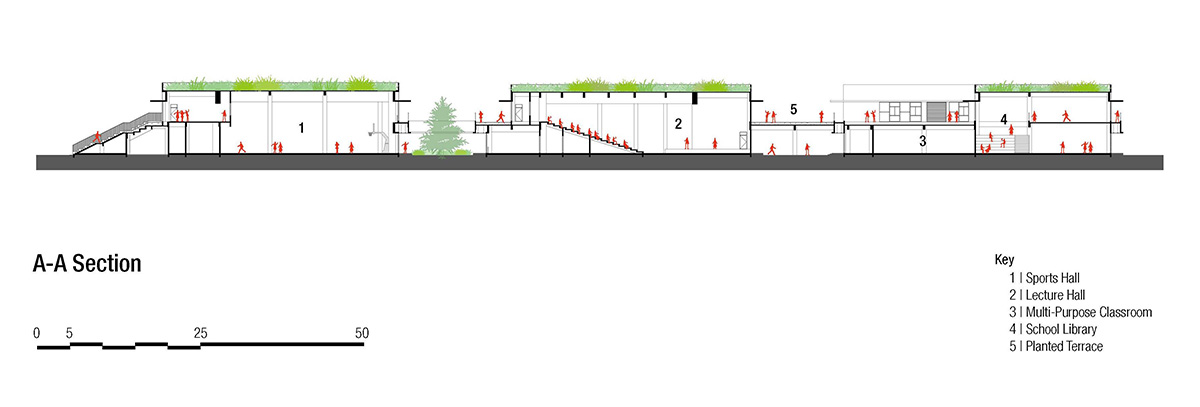
Section AA
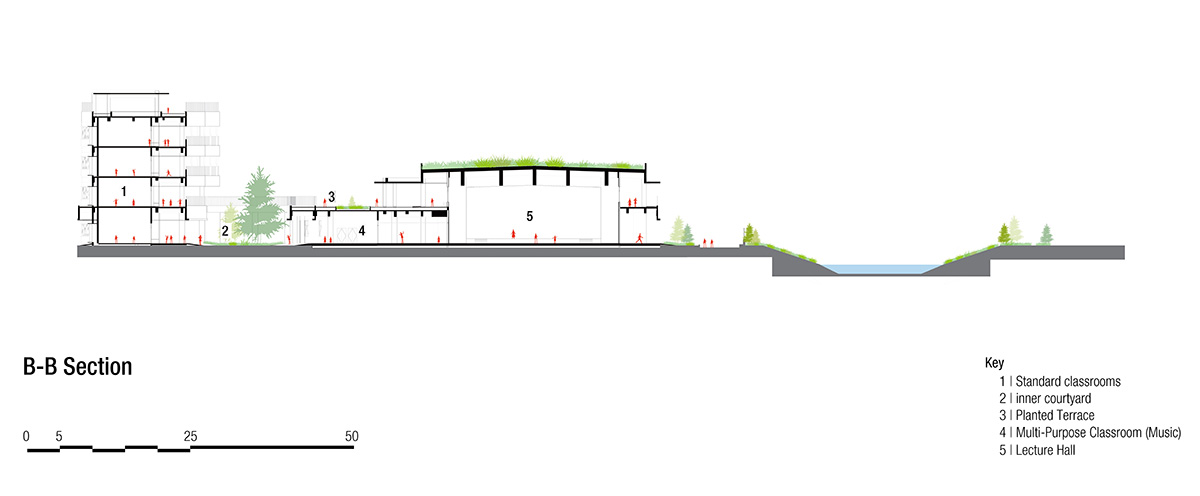
Section BB
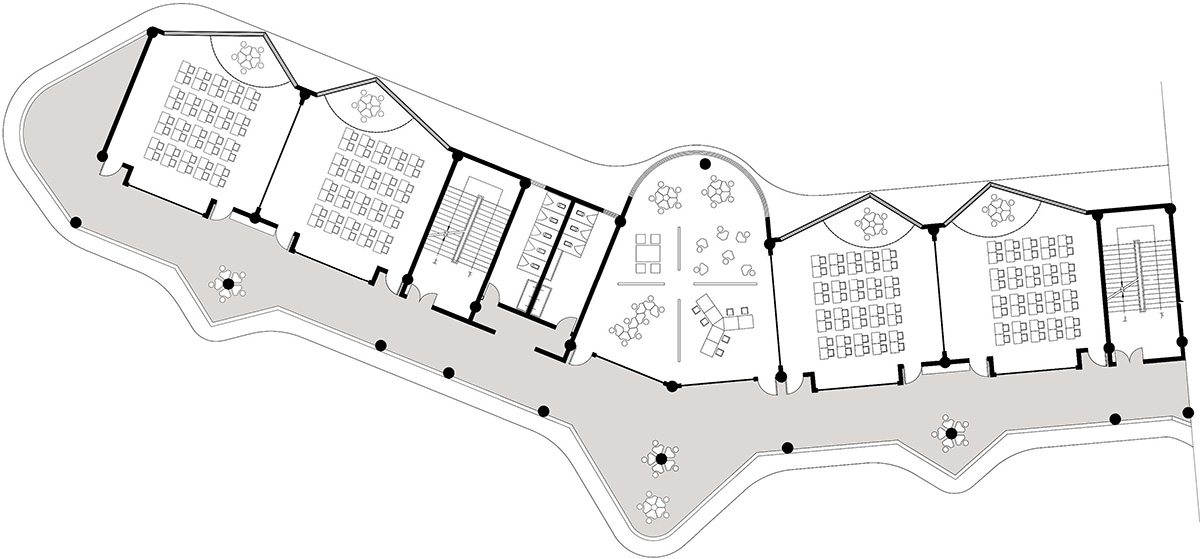
Standard classroom - formal learning layout

Standard classroom - informal learning layout
Project facts
Project name: Chonggu Experimental School
Architects: BAU Brearley Architects+Urbanists
Project status: Completed 2023
Location: Shanghai, Qingpu Distric
Construction Area: 21,425㎡
Program: primary school Year 1-6, twenty classrooms; middle school Year 7-9, sixteen classrooms; canteen, gym, lecture hall, theater, library; science classrooms, music rooms, dance rooms, art rooms, sports grounds.
BAU Project Team
Architecture: James Brearley, Huaili Luo, Wang Liao, He Huang, Zheng Li, Shuangdiao Wang, Xiaohang Qin, Francisco Garcia, Wenxuan Yao;
Landscape: Fang Huang, Liexia Guo, Yuqing He, Li Luo, Zhengting Shi;
Interior: Mingdong Wang, Jiaming Zheng
Client: Shanghai Qingpu District Education Comprehensive Affairs Centre
Project Management: Shanghai Qingpu Newcity Development (Group) Co.,Ltd.
Engineer & architecture documentation: Shanghai Hanlian Architectural Design Consulting Co. Ltd.
Contractor: China Railway No.4 Engineering Group Co.,Ltd.
All images © INNSimages.
All drawings © BAU Brearley Architects+Urbanists.
> via BAU Brearley Architects+Urbanists
BAU Brearley Architects+Urbanists educational building school
